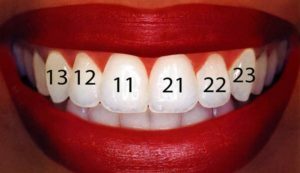 Most adults have 32 permanent teeth in their mouths. Children have dairy teeth, and their number is 20.
Most adults have 32 permanent teeth in their mouths. Children have dairy teeth, and their number is 20.
When a dentist visits a dentist, the doctor examines the oral cavity of the patient. In case of detection of certain defects or signs of destruction, the dentist needs to record this information.
There is a natural question - how to describe a sick tooth in such a way that it can not be confused with any other?
Contents of the
- Why is the numbering of the teeth
- The system of Viola
- Numbering of the permanent teeth
- Numbering of the baby teeth
- Haderup system
- System Zygmondi Palmer
- Universal digital alphabetic system
- How do dentists number their teeth if there are so many systems?
Why is the numbering of the teeth
The right and left parts of the human jaw are absolutely identical and symmetrical. As well, and the teeth on it. In addition, they form the upper and lower rows.
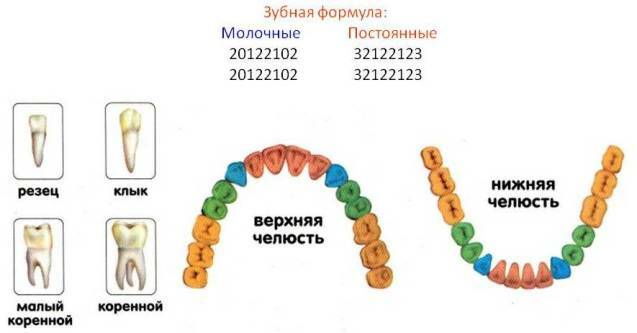 Each pair of similar teeth has strictly limited functions and individual structure. Some of them are designed for biting off pieces of food - incisors, and some for grinding, chewing - root teeth. In order for each tooth to be unmistakably identified and numbering systems created.
Each pair of similar teeth has strictly limited functions and individual structure. Some of them are designed for biting off pieces of food - incisors, and some for grinding, chewing - root teeth. In order for each tooth to be unmistakably identified and numbering systems created.
It is thanks to one of them that the dentist can insert detailed information about a specific tooth into the patient's card. And so that any other expert in this field will certainly understand what exactly is at stake. How do you consider teeth in dentistry?
Viola system
In 1971, members of the International Dental Association adopted a system for marking teeth called Viola. It was a two-digit method of identifying each tooth and was very widely used by dentists around the world.
Numbering of permanent teeth
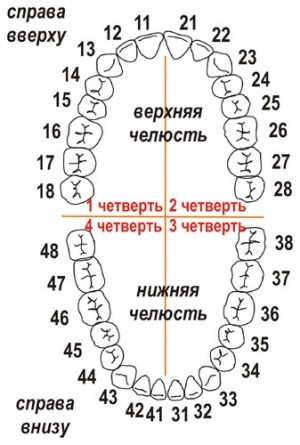
In the picture the diagram of adult teeth with numbers
The Viola system is based on dividing each of the jaws in half. That is, as a result, four parts( segment) of 8 teeth are formed. Applicable to adults, each segment is assigned a number from 1 to 4.
According to this system, each tooth is assigned a two-digit sequence number.
The first digit in it denotes the numbering of the corresponding segment, for example, 1 or 2. And the second is the serial number of a particular tooth starting from the middle of the jaw.
As a result, in spite of the fact that a person has only 32 teeth, some of them are assigned numbers such as 38 or 45. That is, the first segment( upper jaw, right side) will contain teeth from 11 to 18, the second( upper jaw, the left part) from 21 to 28, the third( lower jaw, left part) from 31 to 38 and the fourth( lower jaw, right part) from 41 to 48.
On the left, the arrangement of the teeth according to the numbers in adults.
Numbering of baby teeth
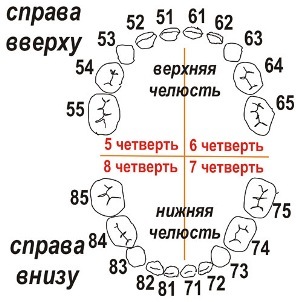
In the photo scheme of the Viola system for baby teeth
For children, the numbering of the jaw segments is from 5 to 8. This is due to the fact that when the baby completely cuts through the baby's teeth, they already have rudiments of permanent teeth.
Therefore, the "baby" teeth have the following numbering: from 51 to 55, from 61 to 65, from 71 to 75 and from 81 to 85. The numbering of parts of the baby's jaw is also carried out clockwise from the 50's to 80's. The baby's teeth have only 20 teeth.
The Viola designation system is quite simple to use. Probably, in connection with this, it is so popular in the dental field of the whole planet.
Haderup System
In the Haderup system of the lower and upper jaw, the "-" and "+" signs are assigned. Teeth of the lower row have a negative sign, and the upper - a positive one.
The designation is made by sharing an Arabic number and the corresponding sign, for example, 5+.The teeth of each half of the jaw are numbered from 1 to 8. For the teeth of the right side, the sign is placed to the right of the digit, for the left - to the left. For example, +2 and 2+.
Milky teeth in accordance with this system have numbers from 1 to 5, while writing in front of the corresponding figure is set to 0( zero).It is he who indicates that the tooth is dairy. The designation of the specific location of the teeth is also indicated by the signs "+" and "-".
Why does a person have two sets of teeth during their lifetime and why do they need milk teeth:
The Zygmondi-Palmer system

The Zygmondi-Palmer system for milk teeth
This system is actively used in practice by prosthetic doctors, orthodontists and surgeons in the field of dentistry and facial surgery. In it, permanent teeth are indicated with the help of Arabic numerals( 1 - 8), and dairy - Roman( I-V).The Zygmondi-Palmer system has existed since 1876.

Sigmogdi - Palmer system for permanent teeth
Universal digital alphabetic system
The name of this system speaks for itself. It is based on the designation of teeth with the help of Latin letters and Arabic numerals. The letters are assigned to the teeth depending on their purpose in the process of food intake, and the numbers are in accordance with the sequential arrangement on the jaw:
- I - teeth in the middle of the lower and upper jaw - incisors , there are 8 of them, 2 in each jaw segment;
- C - canines , they are designated only by letters, since for each segment they have only one;
- P - premolars , as well as cutters of their 8, two for each segment;
- M - molars , they are greatest in the oral cavity of an adult - 12( provided that all wisdom teeth are cut through).
The teeth of an adult are indicated in capital letters, dairy - in uppercase. The universal digital alphabetic system in some cases allows the designation of similar in function of the teeth in one digit( sequence number).
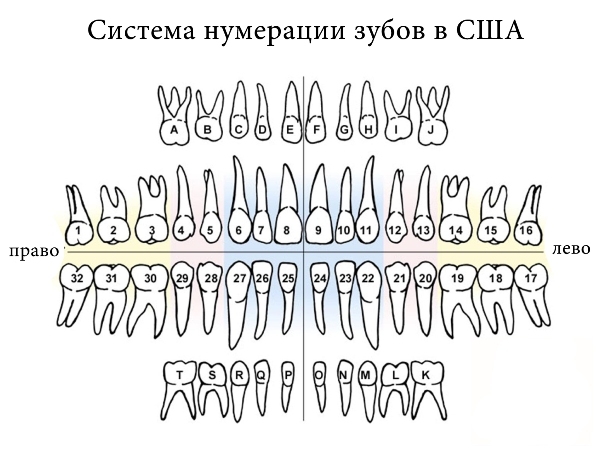 To milk teeth is also applicable system of designation only with the use of letters. The calculus begins clockwise starting with the letter A on the upper jaw, and with K on the bottom.
To milk teeth is also applicable system of designation only with the use of letters. The calculus begins clockwise starting with the letter A on the upper jaw, and with K on the bottom.
How do dentists number teeth, if there are so many systems?
All these systems are used by dentists of different countries in their practice to the present. But the most perfect and "young" among them is the Viola system. It is also recommended by the World Health Organization for use in medical institutions.
